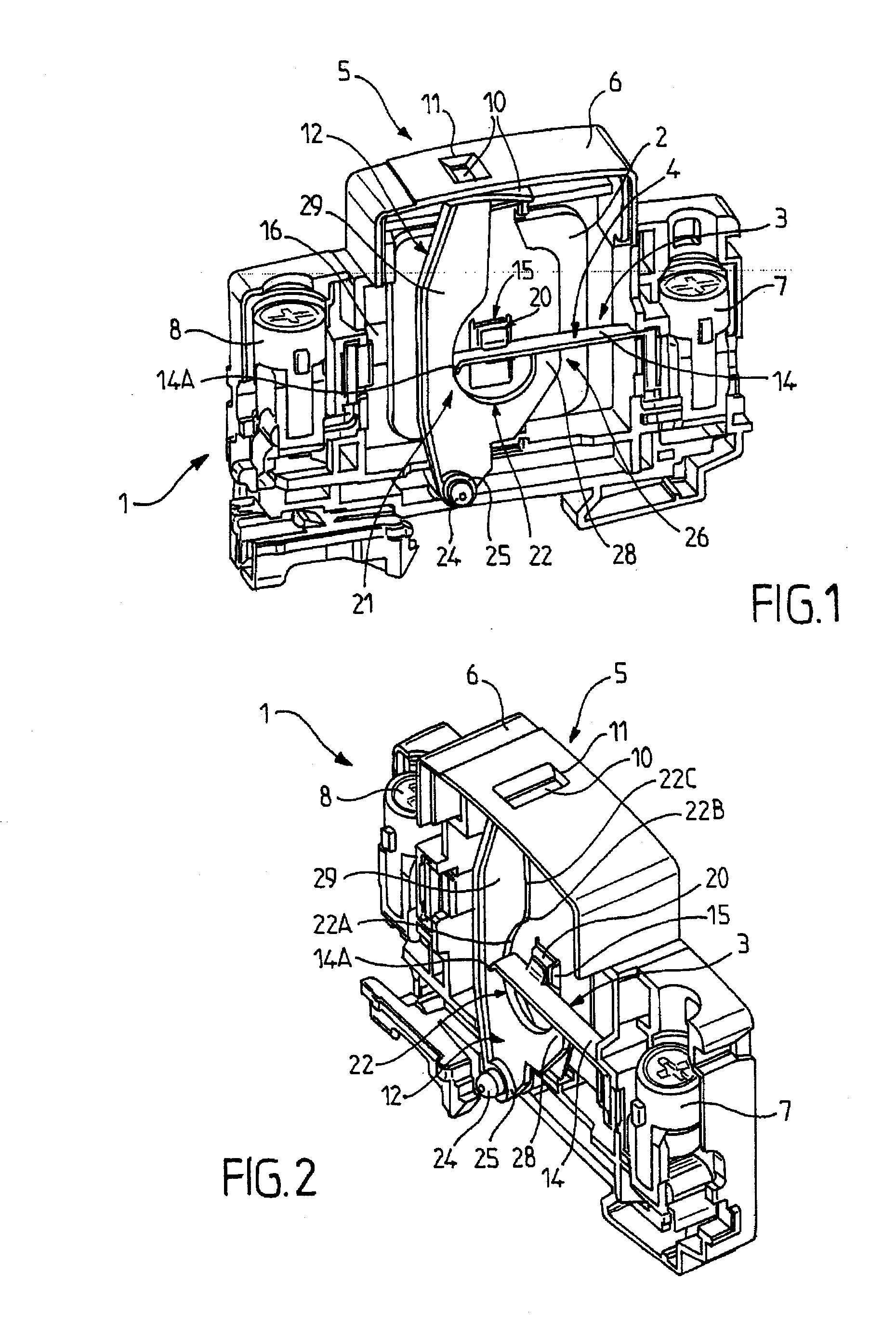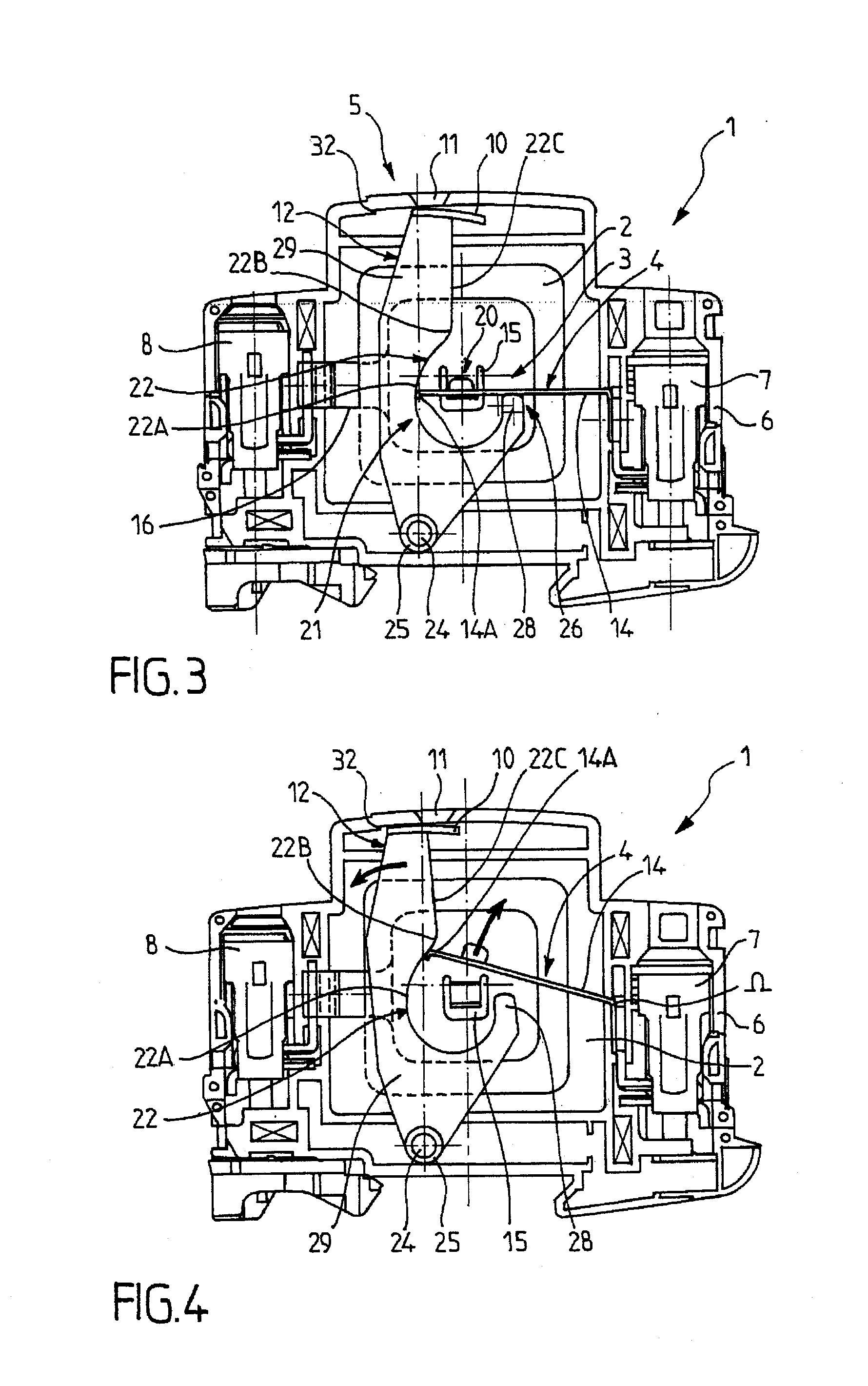Overvoltage protection device with simplified display system and corresponding production method
a technology of display system and overvoltage protection device, which is applied in the direction of circuit-breaking switch, circuit-breaking switch for excess current, emergency protective arrangement for limiting excess voltage/current, etc., can solve the problem that the protection component cannot conduct default current, and the installation is damaged gravely, etc. problem, to achieve the effect of protecting the electrical installation
- Summary
- Abstract
- Description
- Claims
- Application Information
AI Technical Summary
Benefits of technology
Problems solved by technology
Method used
Image
Examples
Embodiment Construction
[0035] The overvoltage protection device 1 according to the present invention is intended to be shunt-connected (or connected “in parallel”) to an electrical installation to be protected.
[0036] For purposes of the present disclosure, the term “electrical installation” refers to any type of electrically powered apparatus or network capable of undergoing voltage disturbances, in particular, transient overvoltages caused by lightning.
[0037] The electrical installation overvoltage protection device 1 can advantageously be a lightning arrestor.
[0038] The overvoltage protection device 1 according to the present invention is advantageously intended to be placed between a phase of the installation to be protected and the ground. It is also possible to envisage, without going beyond the scope of the present invention, that the device 1, instead of being shunt-connected between a phase and the ground, is connected between a neutral conductor and the ground, between the phase and the neutra...
PUM
 Login to View More
Login to View More Abstract
Description
Claims
Application Information
 Login to View More
Login to View More - R&D
- Intellectual Property
- Life Sciences
- Materials
- Tech Scout
- Unparalleled Data Quality
- Higher Quality Content
- 60% Fewer Hallucinations
Browse by: Latest US Patents, China's latest patents, Technical Efficacy Thesaurus, Application Domain, Technology Topic, Popular Technical Reports.
© 2025 PatSnap. All rights reserved.Legal|Privacy policy|Modern Slavery Act Transparency Statement|Sitemap|About US| Contact US: help@patsnap.com



